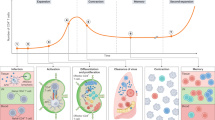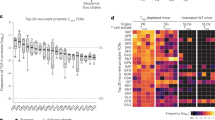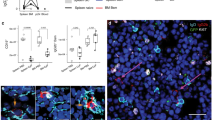Abstract
MEMORY is a fundamental characteristic of immunological phenomena; it is manifested by enhanced responsiveness upon re-exposure to antigen, and its specificity forms the basis of the clonal selection concept. In collaborative antibody responses the development of memory has been demonstrated in both the T helper (TH) cell and the B cell populations1, whereas in cell mediated reactions such as delayed hypersensitivity, allograft rejection, cytotoxicity and graft-versus-host responses, memory is a property of the T cell subpopulation mediating each type of response. Specific suppression of antibody production by a subpopulation of T cells is now well documented2–4. The importance of suppressor T (Ts) cells in immune homeostasis is highlighted by their demonstration during normal immune responses5 as well as following tolerance induction6. After primary immunisation, however, Ts cells are detectable for only a limited period of time and do not prevent the emergence of long-lived TH and B memory cells. The parallel development of memory Ts cells would therefore be highly advantageous if these cells are to be effective in the regulation of secondary immune responses. Furthermore, the potential value of Ts in the maintenance of active tolerance to self antigens would be enhanced if a pool of memory cells existed which could be rapidly recruited to abort incipient autoimmune responses. The experiments reported here demonstrate the presence of specific long lived memory Ts cells in mice exposed to the protein antigen, human γ-globulin (HGG).
This is a preview of subscription content, access via your institution
Access options
Subscribe to this journal
Receive 51 print issues and online access
$199.00 per year
only $3.90 per issue
Buy this article
- Purchase on Springer Link
- Instant access to full article PDF
Prices may be subject to local taxes which are calculated during checkout
Similar content being viewed by others
References
Miller, J. F. A. P. & Sprent, J. J. exp. Med. 134, 66–82 (1971).
Gershon, R. K. & Kondo, K. Immunology 21, 903–914 (1971).
Feldmann, M. Eur. J. Immun. 4, 667–674 (1974).
Moller, G. (ed.) Transplant Rev. 26 (Munksgaard, Copenhagen 1975)
Taussig, M. J. Nature 248, 236–238 (1974).
Basten, A., Miller, J. F. A. P., Sprent, J. & Cheers, C. J. exp. Med. 140, 199–217 (1974).
Basten, A., Miller, J. F. A. P. & Johnson, P. Transplant Rev. 26, 130–169 (1975).
Basten, A. et al. Cold Spring Harb. Symp. quant. Biol. 41, 93–103 (1977).
Feldmann, M. et al. Nature 258, 614–616 (1975).
Eardley, D. D. & Sercarz, E. E. J. Immun. 118, 1306–1310 (1977).
Jerne, N. K. Ann. Immun. 125 c, 373–389 (1974).
Cunningham, A. J. & Szenberg, A. Immunology 14, 599–600 (1968).
Author information
Authors and Affiliations
Rights and permissions
About this article
Cite this article
LOBLAY, R., PRITCHARD-BRISCOE, H. & BASTEN, A. Suppressor T-cell memory. Nature 272, 620–622 (1978). https://doi.org/10.1038/272620a0
Received:
Accepted:
Issue Date:
DOI: https://doi.org/10.1038/272620a0
This article is cited by
-
Regulatory T cell memory
Nature Reviews Immunology (2016)
-
The evolution of clinical immunology and allergy in Australia
Immunology & Cell Biology (2008)
-
Self-nonself discrimination and tolerance in T and B lymphocytes
Immunologic Research (1993)
-
Festschrift Maternal autoimmune disease influences self‐tolerance in offspring: The role of suppressor cells and materno‐foetal cell traffic
Immunology & Cell Biology (1988)
-
Self-regulatory processes in the immune system and the principle of an immunologic mobile
Cybernetics (1986)
Comments
By submitting a comment you agree to abide by our Terms and Community Guidelines. If you find something abusive or that does not comply with our terms or guidelines please flag it as inappropriate.



